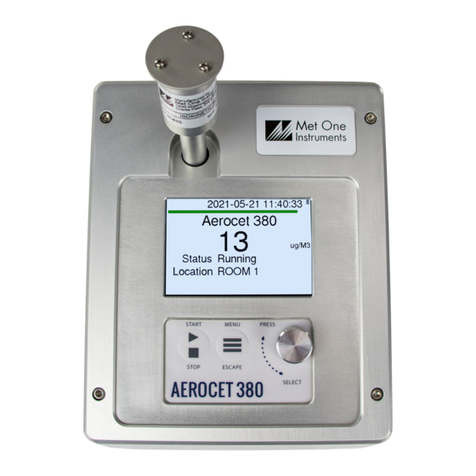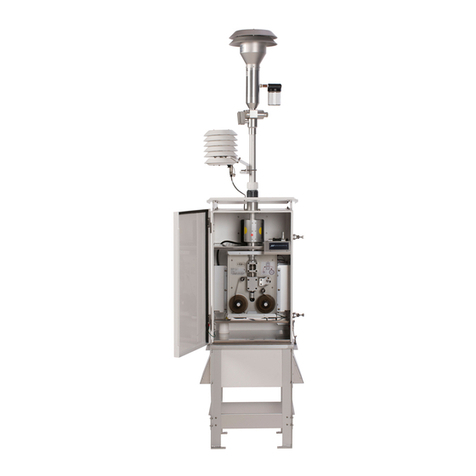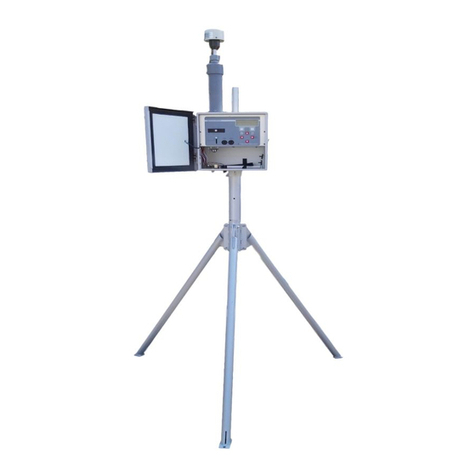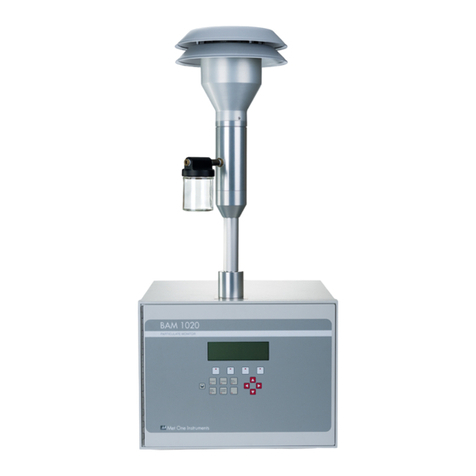BAM-1020-9804 Leak Check REV A Page 9
2.2.3 Filter Tape Leak Test
Use this procedure to assess the actual leak rate at the nozzle / tape interface. It is assumed that
the Basic Leak Check and the Total System Leak Test have both already been performed and a
high flow rate (greater than 1.5 LPM) at the nozzle / tape interface was found. It is also assumed
that the filter tape is still not installed.
Required Tools: Certified Calibration Transfer Standard (CTS) such as the BX-307
Nozzle Seal Tool (Part No. 7440)
Filter Tape (Part No. 460180)
1. Remove the BX-305 from the sample tube and install the calibration transfer standard (CTS).
2. Navigate to the TEST>PUMP menu.
3. The Nozzle Seal tool may already be installed with the hole positioned beneath the nozzle
(see Figure 2-2). If this is not the case, press the NOZZLE button to raise the nozzle (if
needed), position the sealing tool in this configuration, and then lower the nozzle.
4. If the LEAK status is set to LEAK ON, press the LEAK button to set the status to LEAK OFF.
5. Press the PUMP button to start the pump.
6. Allow at least 2-3 minutes for the flow to fully stabilize. When the flow rate stabilizes, write
down the CTS flow rate value. This is the “Without Tape” value.
NOTE: If after 5 minutes, the flow still has minor fluctuations, estimate the average flow rate
and use that for the “Without Tape” value.
7. Stop the pump and raise the nozzle.
8. Remove the Nozzle Seal Tool.
9. Place a three-inch-long piece of filter tape directly below the nozzle.
10.Press the PUMP button. The BAM-1020 should automatically lower the nozzle onto the strip
of tape and start the pump.
11.When the flow rate stabilizes, write down the CTS flow rate value. This is the “With Tape”
value.
12.Stop the pump and raise the nozzle.
13.Remove the strip of filter tape.
14.Subtract the “With Tape” value from the “Without Tape” value using the following equation:
WithoutTape –WithTape = LeakRate
The result should be a positive value of 0.3 LPM or less. A typical example might look like
this: 16.71 LPM –16.58 LPM = 0.13 LPM
a. If the difference is 0.3 LPM, or less, the leak test passes. Record the results (as
needed), remove all test equipment, and resume normal sampling operations.
b. If the difference is greater than 0.3 LPM, an out of tolerance leak exists at the
nozzle / tape interface. Thoroughly clean the nozzle and vane area and then
perform this test again. Repeat this test. If after a couple of attempts this test still
fails, contact the Met One Instruments, Inc. service department (see section 1.2)
for assistance.
































